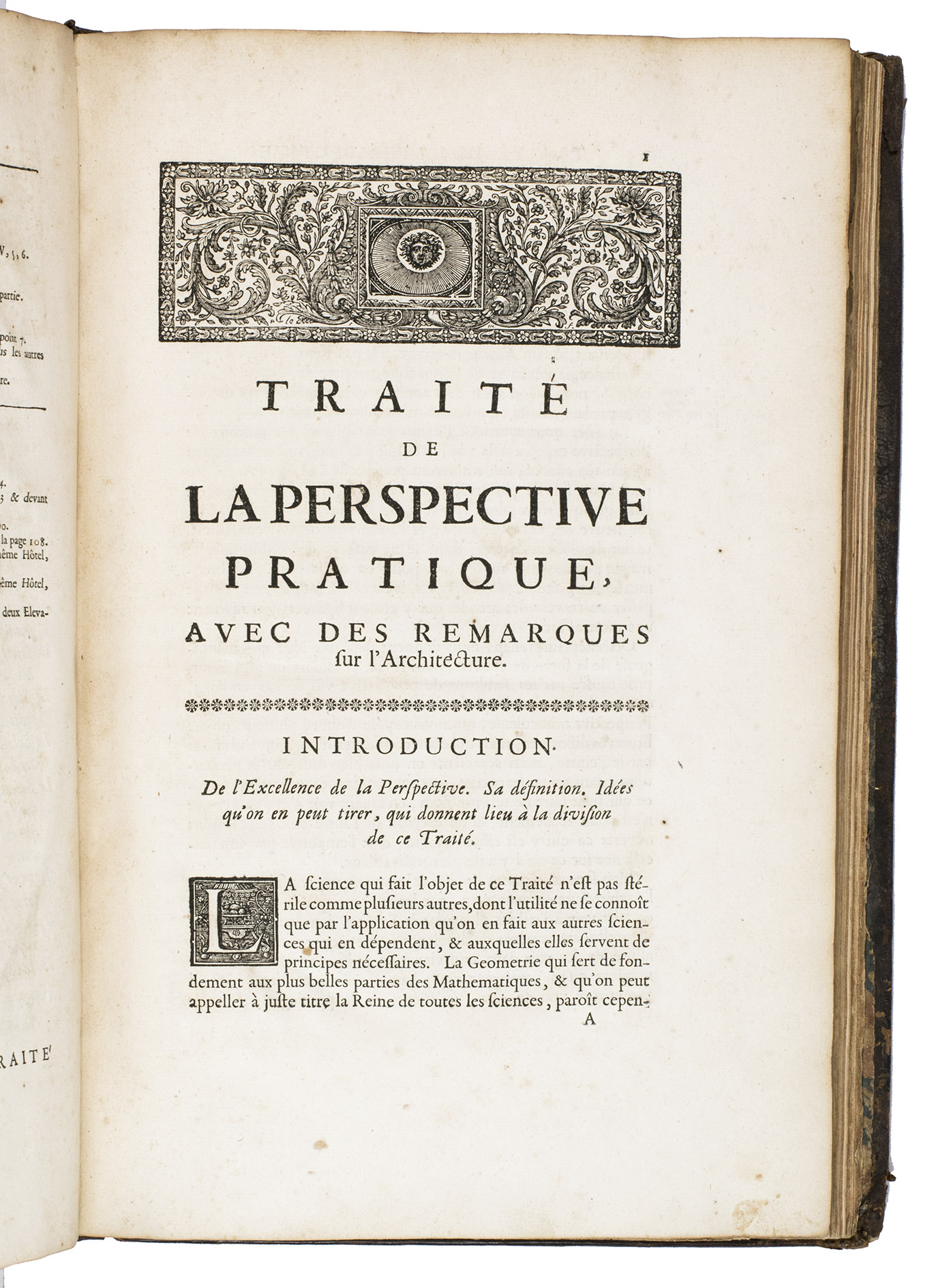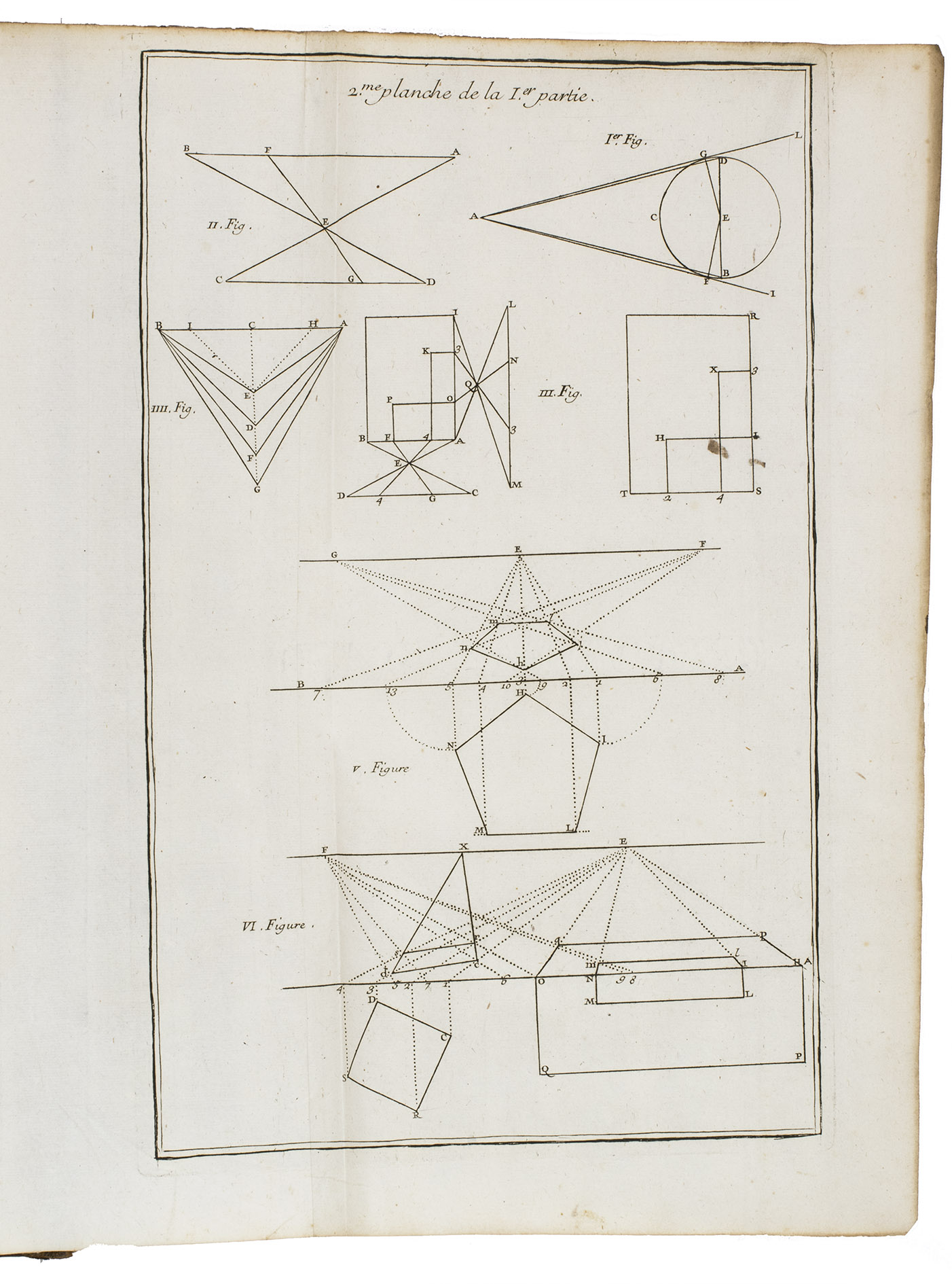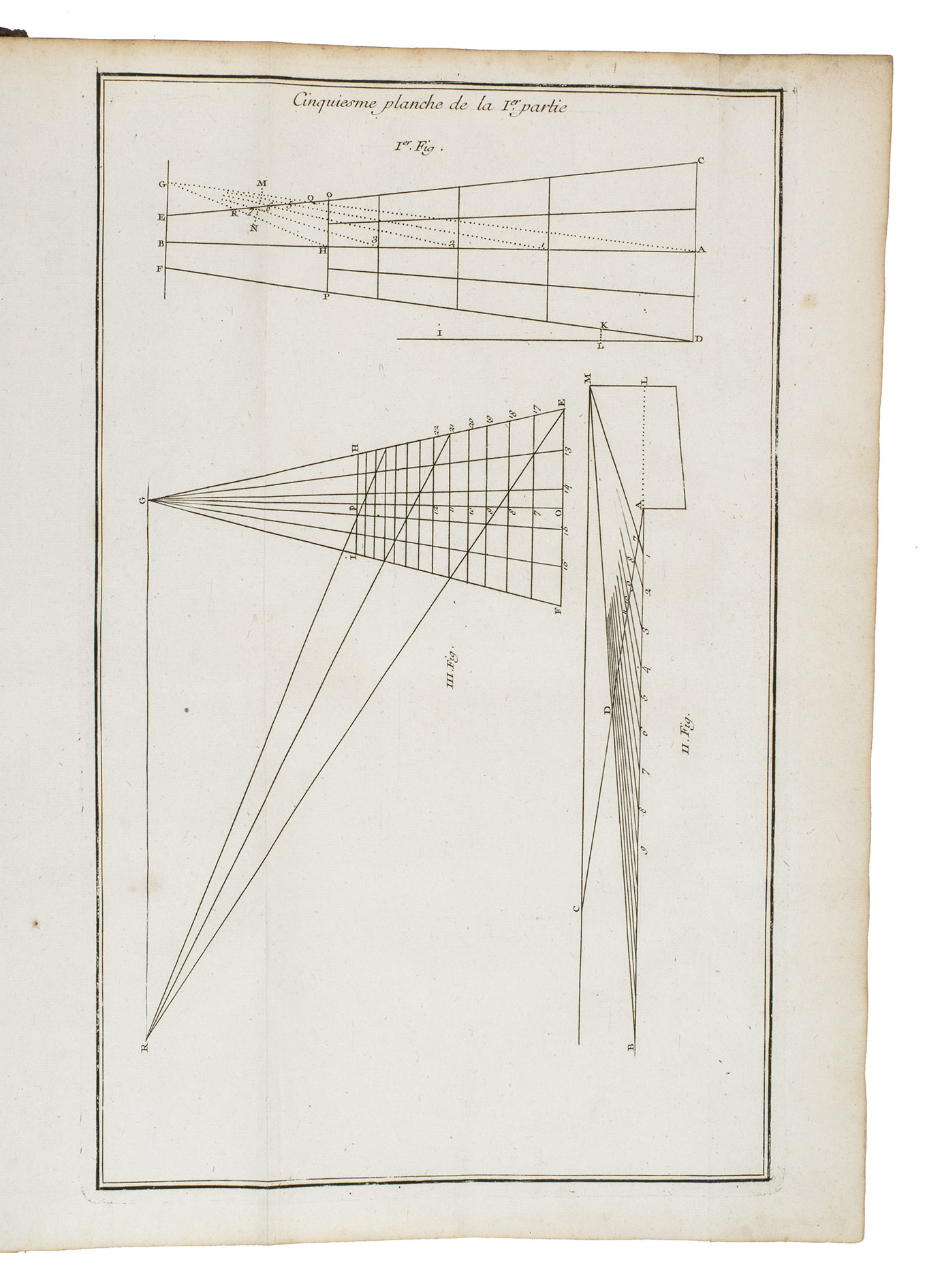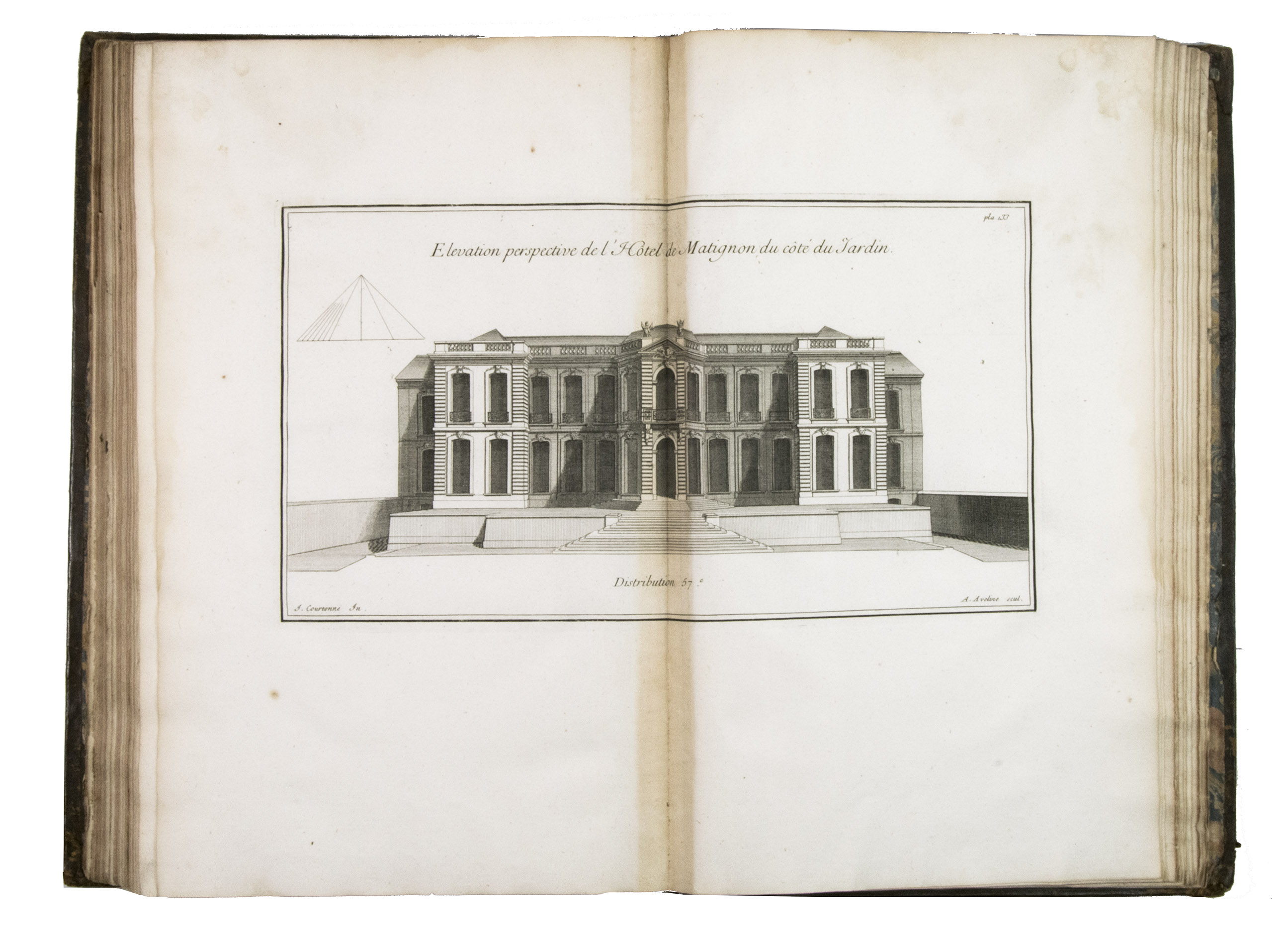COURTONNE, Jean.
Traité de la perspective pratique, avec des remarques sur l'architecture, suivies de quelques edifices considerables mis en perspective, & de l'invention de l'auteur. Ouvrage très-utile aux amateurs de l'architecture & de la peinture.
Paris, Jacques Vincent, 1725. 3 parts in 1 volume. Folio. With 33 engraved plates (32 folding, 1 double-page), an engraved frontispiece, numerous decorated woodcut initials, and head- and tailpieces (both woodcut and built up from typographical ornaments). Contemporary gold and blind tooled mottled brown calf. [2 blank], [14], 116, [2] pp.
€ 2,250
First edition of an excellent manual on practical perspective, written by a celebrated French architect. The work is divided into three parts, all treating the various aspects of perspective put into practice. An extra chapter is added at the end, discussing some problems in architecture in regard to optics and perspective. The work is copiously illustrated with large engravings of optics and perspective, as well as plans of buildings designed by the author.
Jean Courtonne (1671-1739) was an architect and engineer, and was appointed royal professor of architecture at the Académie Royale d'Architecture in 1730. He built two of the most beautiful houses in the Faubourg Saint Germain at Paris, namely the Hôtel de Noirmoutier, and the splendid Hôtel de Matignon, which is currently the official residence of the Prime Minister of France. In the latter, Courtonne invented the off-centre plan, considered one of the original characteristics of Parisian private mansions. These two buildings, as well as many others, are shown in the present work.
The Traité de la perspective practique is Courtonne's only work. Although there is only one edition of the text, there are multiple states of the plates, which can be distinguished by how the last 14 plates are numbered. The plates in the present copy correspond to the second state.
With a contemporary signature on the title page. The edges and corners of the boards are scuffed, the front and back are somewhat rubbed and scratched, the hinges have weakened, but the structural integrity of the binding is still intact, the leather of the 6th compartment on the spine has detached, but is still present. The work is slightly browned and foxed throughout, with a small tear in the lower margin of page 27, the last 14 plates are bound in the wrong order, but are all present. Otherwise in good condition. Berlin Kat. 4729; Brunet VI, 8428; Fowler 94; Savage N. et all, Catalogue of the British Architectural Library, 729.
Related Subjects:












